Video content is one of the most powerful ways to capture attention and drive traffic, but simply creating great videos isn’t enough. If your videos aren’t showing up in search results, you’re missing out on a huge opportunity to grow your audience.
To get the most out of your efforts, you need to make sure your videos are optimized to rank on Google and reach the visitors who matter most. 🎥
When your videos appear higher in search results, you gain more visibility, build trust with your audience, and expand your brand’s reach.
In this post, you’ll learn the best practices for video SEO, along with actionable strategies that will help your content climb the rankings and attract the right viewers.
So, without any further ado, let’s get started.

Table Of Contents
1 What is Video SEO?
Video SEO (Search Engine Optimization) is the practice of optimizing video content to improve its visibility and ranking on search engine results pages (SERPs).
The goal of video SEO is to ensure that videos are easily found by search engines like Google and appear prominently when audiences search for relevant content.
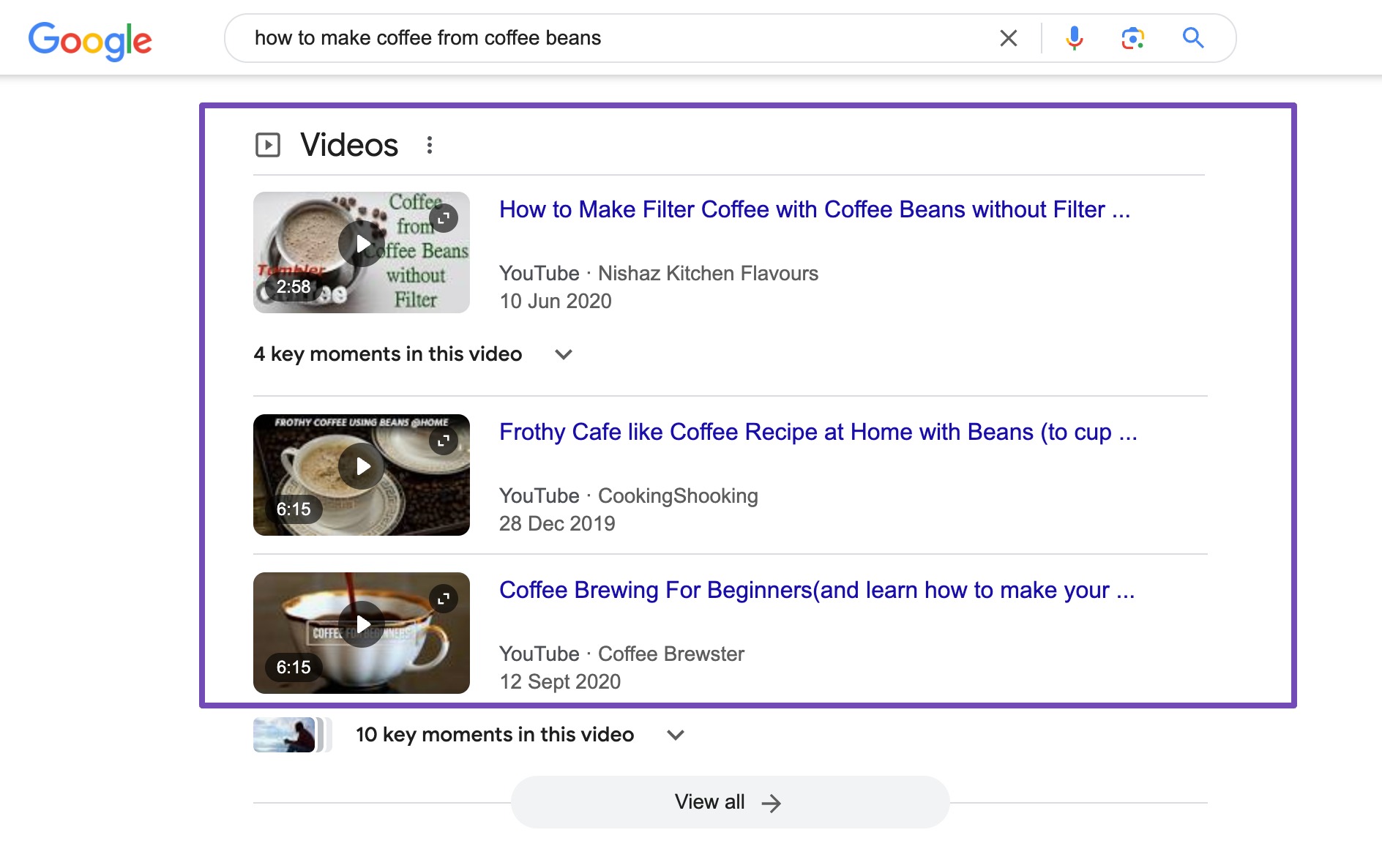
This process involves several key elements, including optimizing the video’s title, description, tags, and metadata with relevant keywords that match what audiences are searching for.
Additionally, factors such as the video’s thumbnail, engagement metrics (like views, comments, and shares), and the quality of the content itself play an essential role in determining how well a video ranks.
2 Best Practices for Video SEO
Let us now discuss the best practices for video SEO.
2.1 Create Video Content Around Popular Search Queries
If you want your videos to attract viewers, start by creating content around topics visitors are already searching for.
This ensures your videos meet real demand and have a higher chance of ranking on both Google and YouTube.
Begin with keyword research to know what your audience cares about most. Use tools like Google Trends, YouTube’s search suggestions, or dedicated keyword research tools to find popular queries in your niche.
For example, if you run a fitness channel, you might find that exercise for weight loss or belly fat yoga are highly searched topics.
By creating videos around these terms, you not only increase your chances of ranking but also deliver content that directly answers your audience’s needs.
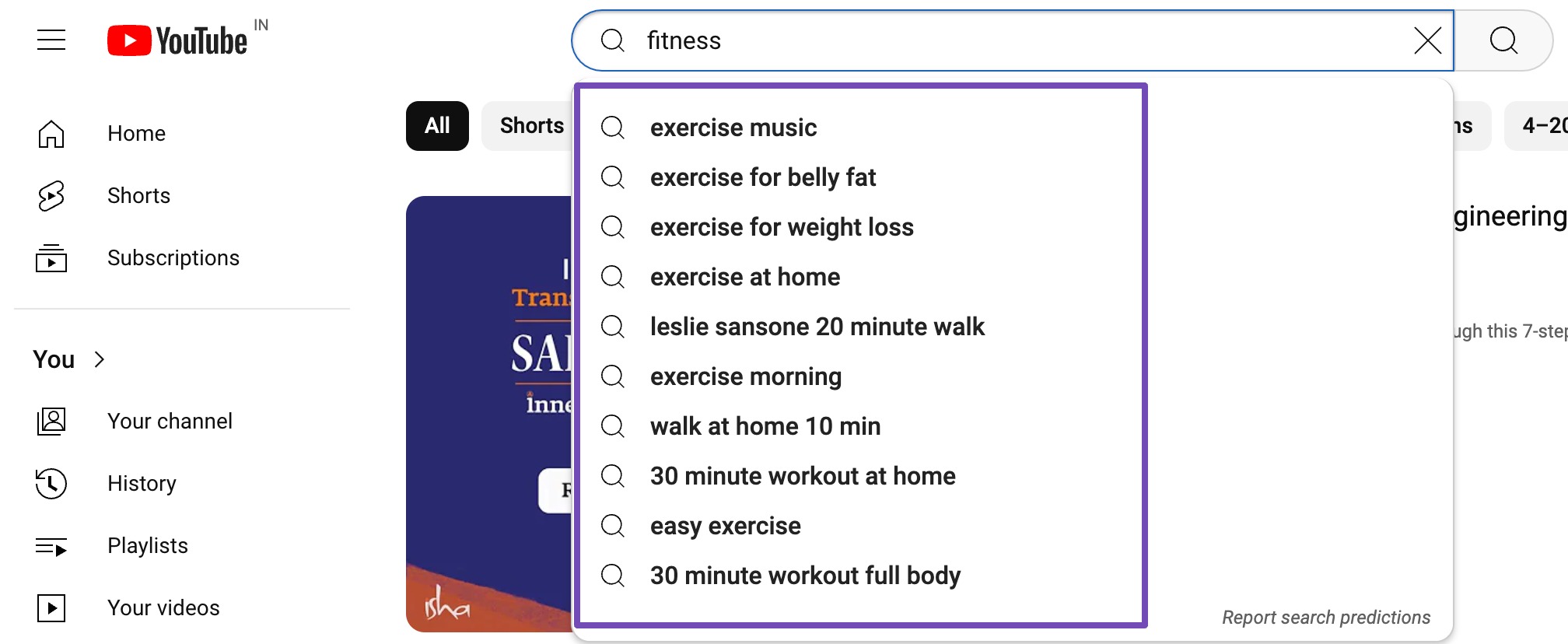
When you align your videos with popular search queries, you boost visibility, provide genuine value, and build trust. Over time, this approach helps you grow a loyal audience that keeps coming back for relevant, useful content.
2.2 Focus on High-Quality Video Production
High-quality production is at the heart of effective Video SEO. Search engines and platforms like YouTube favor content that delivers value to viewers, and both your video’s technical setup and its content play a role.

On the technical side, aim for clear visuals, crisp audio, and smooth editing. A well-lit setting, clean sound, and steady shots will always outperform poor lighting, distracting background noise, or choppy cuts.
For example, if you’re filming a How to Cook the Perfect Steak tutorial, shooting in a bright kitchen with a good camera and clear voice-over instructions will make your video more enjoyable and easier to follow.
But quality isn’t just about production; it’s also about the substance of your content. Your video should provide valuable, relevant information that answers your audience’s questions. Outlining your structure before filming (with a clear beginning, middle, and end) helps maintain flow and keeps viewers engaged.
To make planning easier, you can use tools like Rank Math’s Content AI to generate a full YouTube script in seconds, complete with title ideas, context, and even suggestions for visuals. In fact, with the help of AI, 47% of users are creating content faster, while 35% are shifting their focus from quantity to quality.
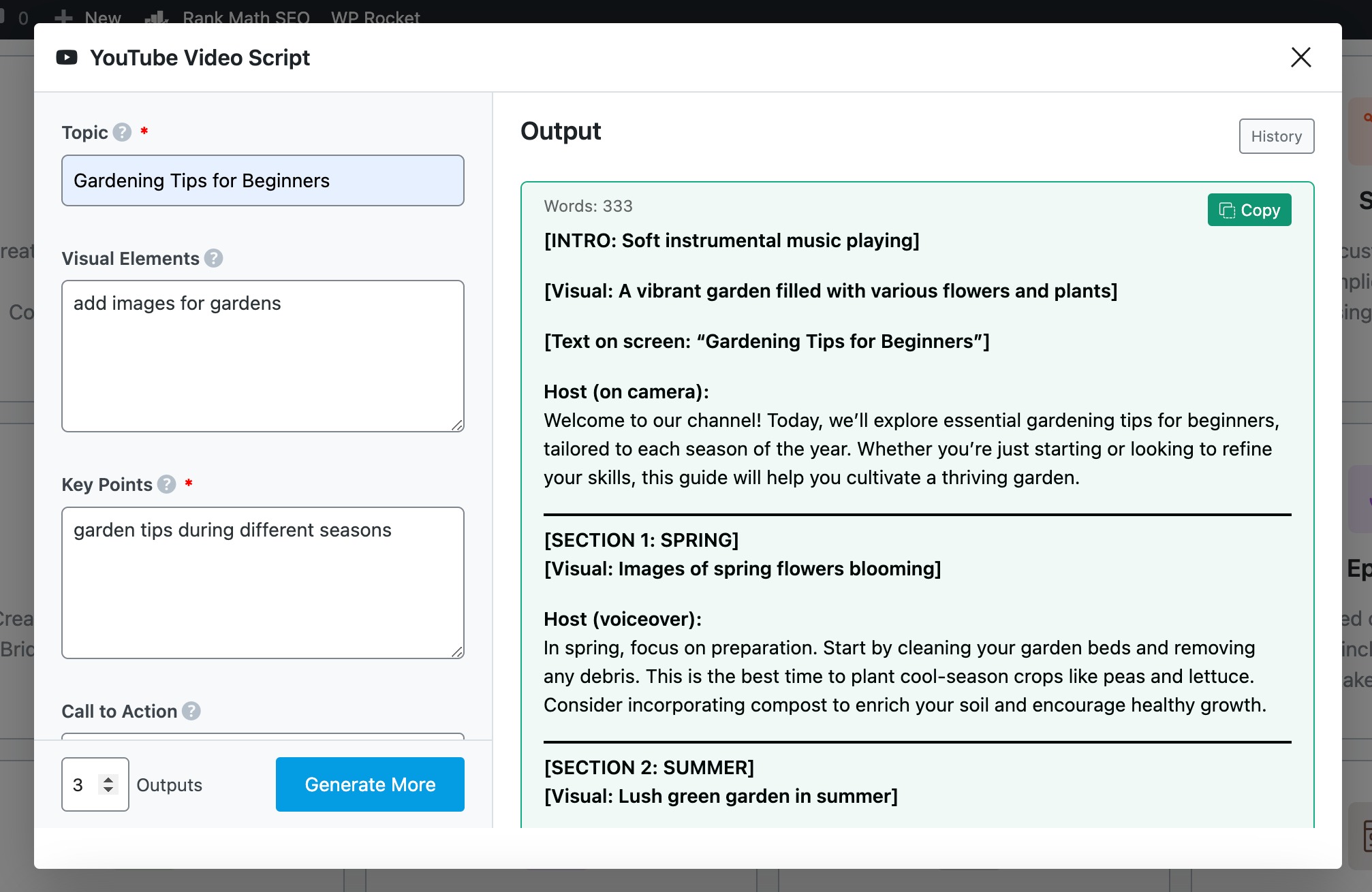
2.3 Ensure Your Video is Indexed by Search Engines
No matter how well-optimized your video is, it won’t appear in search results unless it’s indexed. Indexing is simply the process of Google and other search engines crawling your video and storing its details so it can show up when visitors search for relevant topics.
Here are a few ways to check and ensure your video is indexed:
Use Google Search Console
A straightforward way to check if your video page is indexed is by using Google Search Console.
After uploading your video to platforms like YouTube or embedding it on your website, head to Google Search Console and enter the URL of your video in the URL Inspection tool.
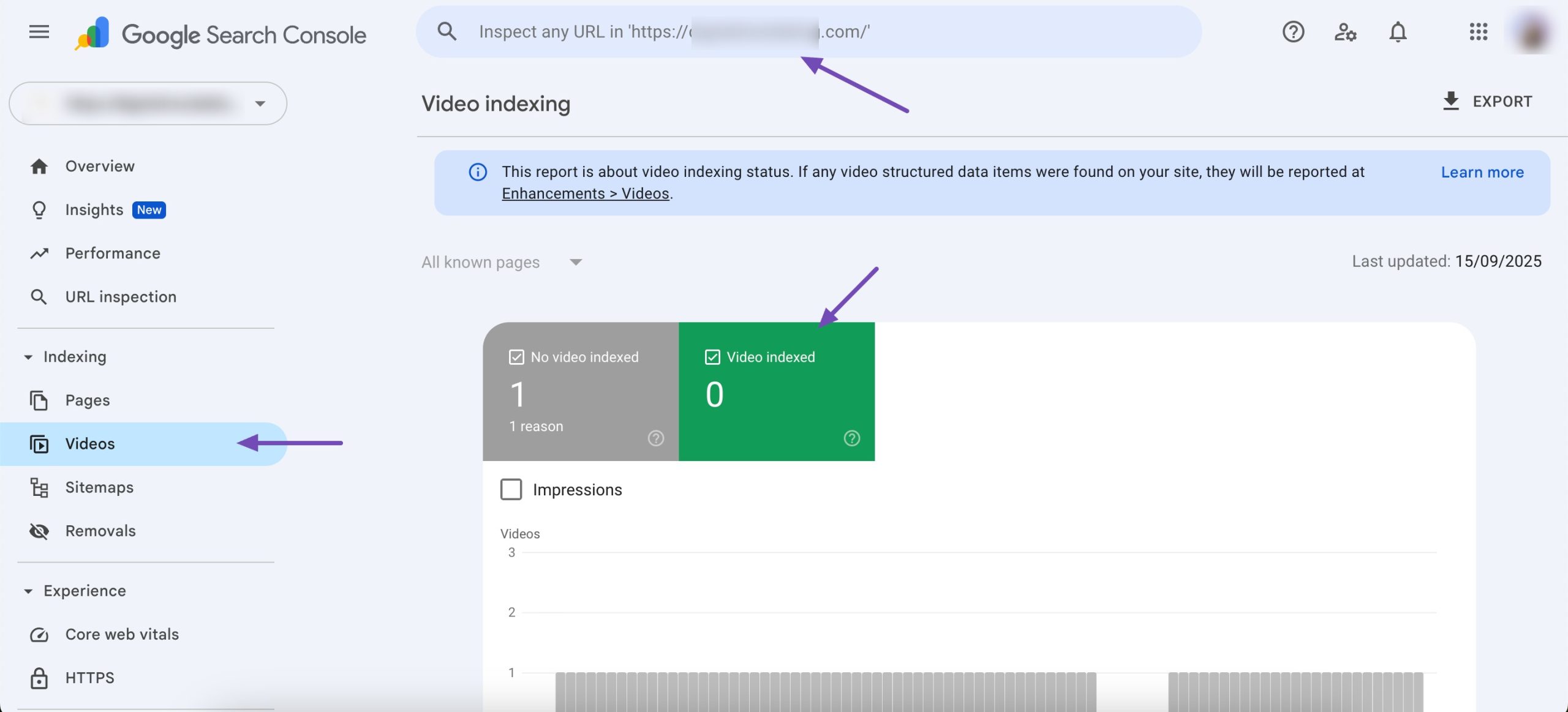
Google Search Console will tell you whether the video page has been indexed.
Search for Your Video on Google
Another simple method is to perform a Google search using a few specific keywords from your video title along with your brand name or video URL.
If your video appears in the search results, it means it has been indexed.
For instance, if your video is titled How to Use Content AI for FREE Forever, you can search for video topic+ [Your Brand Name] to see if it shows up on Google.
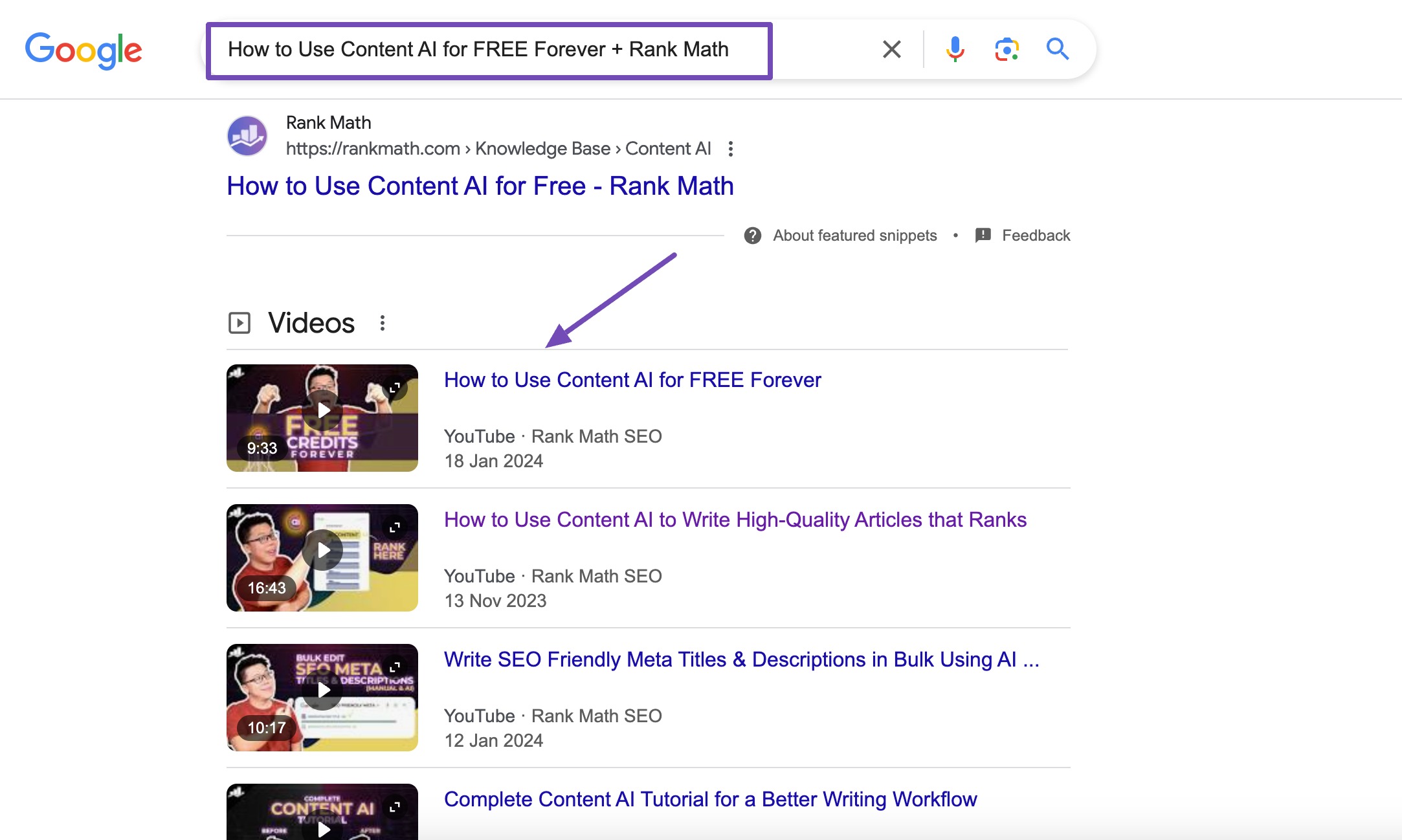
Submit a Video Sitemap
If your video isn’t indexed, submitting a video sitemap can help.
A video sitemap provides Google with metadata like your video’s title, description, and thumbnail, making it easier to discover and index your content.
With Rank Math SEO, this process is automatic; when video content is detected in your posts, it’s automatically added to your Video Sitemap.
You can find the video sitemap settings by navigating to Rank Math SEO → Sitemap Settings → Video Sitemap from your WordPress dashboard.
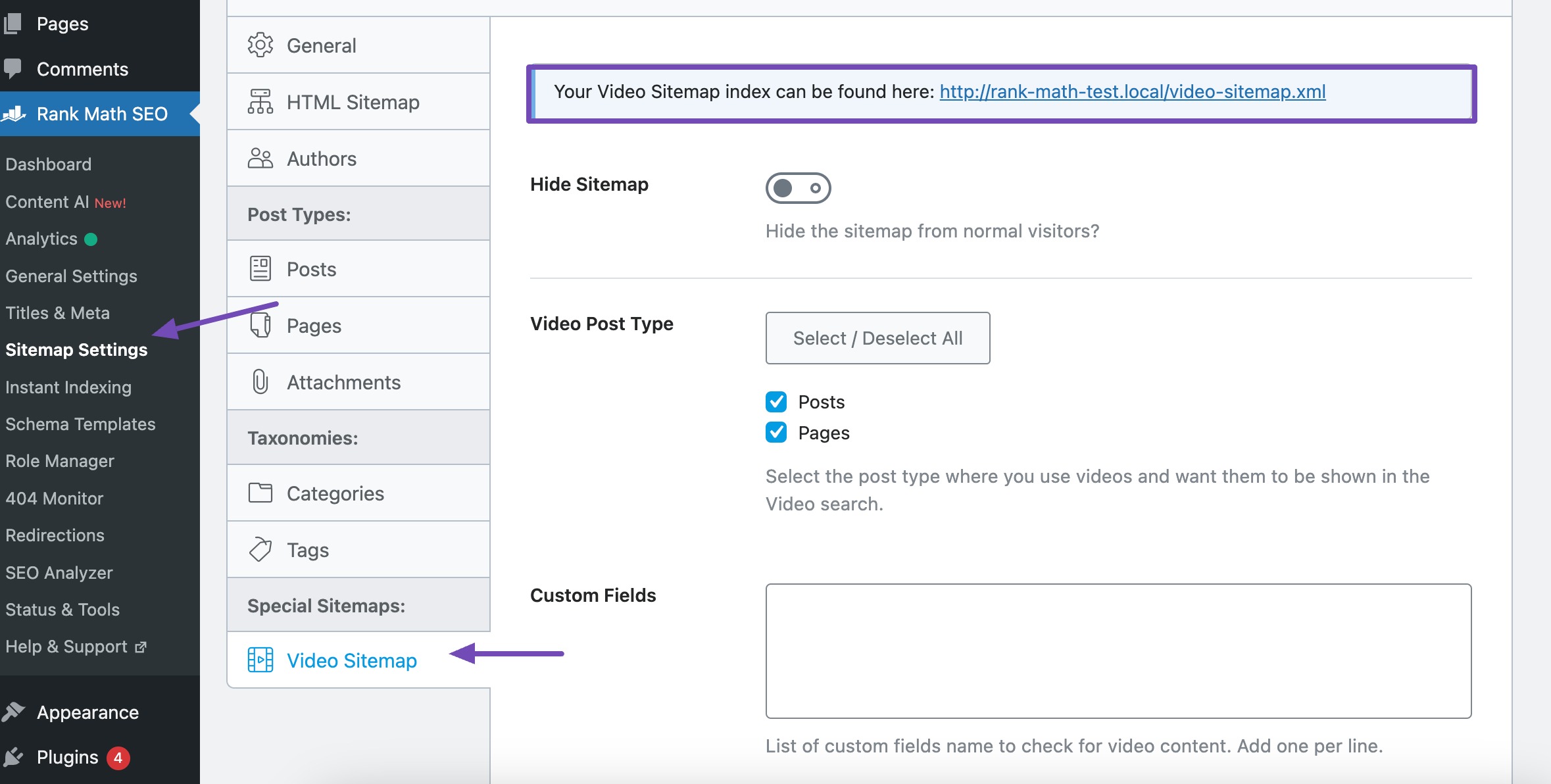
Refer to our dedicated tutorial on using Video Sitemaps in Rank Math.
Monitor Indexing Status Over Time
It’s also important to monitor your video’s indexing status over time, especially if you regularly update your content or add new videos.
Regularly checking your video’s indexing status helps you identify and resolve issues promptly, ensuring your content remains visible to your audience.
2.4 Optimize Your Videos for Better Video SEO
If you want your videos to rank higher on Google and YouTube, you need to optimize them the right way. Video optimization makes your content easier to discover, more relevant to your audience, and more engaging, leading to more views, higher watch time, and stronger conversions.
Create Compelling Titles and Descriptions
Your title and description are the first things both search engines and viewers notice. Keep your titles short, engaging, and keyword-focused.
In your description, give a detailed overview of what your video covers. Add secondary keywords, timestamps for important sections, and links to helpful resources. This not only improves SEO but also enhances the viewing experience.

Enhance Video SEO With Structured Data
Structured data (Schema markup) helps search engines better understand your video content, which can lead to richer search results and higher rankings.
With Rank Math SEO, you don’t have to do this manually; it automatically detects videos in your content and adds the Video Schema for you.
Design Eye-Catching Thumbnails
Your thumbnail is often the deciding factor for whether someone clicks on your video. Use high-contrast colors, bold text, and clear images that represent your content accurately.
An engaging thumbnail improves CTR, which signals to search engines that your video is worth promoting.
When you enable the Autogenerate Image option in Rank Math, it can automatically generate a thumbnail whenever it detects a new video.

Use Transcripts and Closed Captions
Adding transcripts gives search engines more text to crawl, improving your video’s chances of ranking for relevant queries.
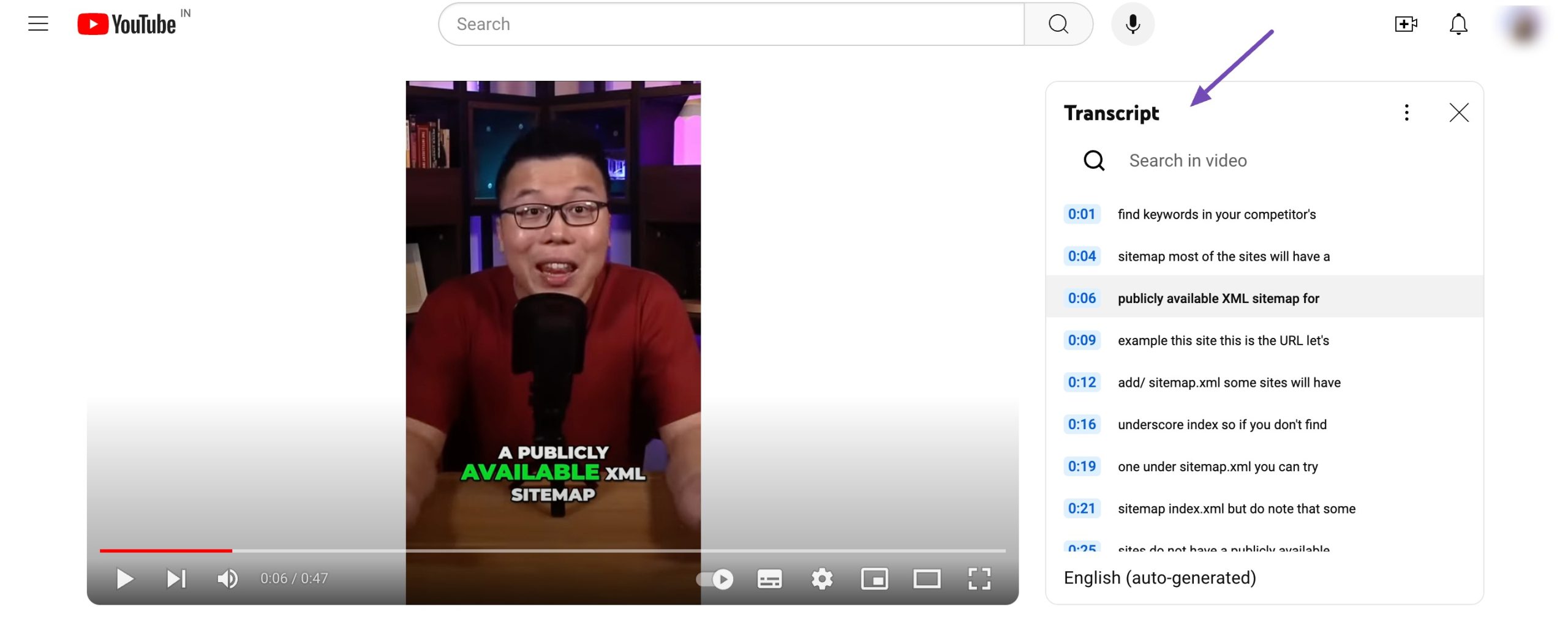
Closed captions not only boost accessibility but also make your video more user-friendly for visitors watching without sound.
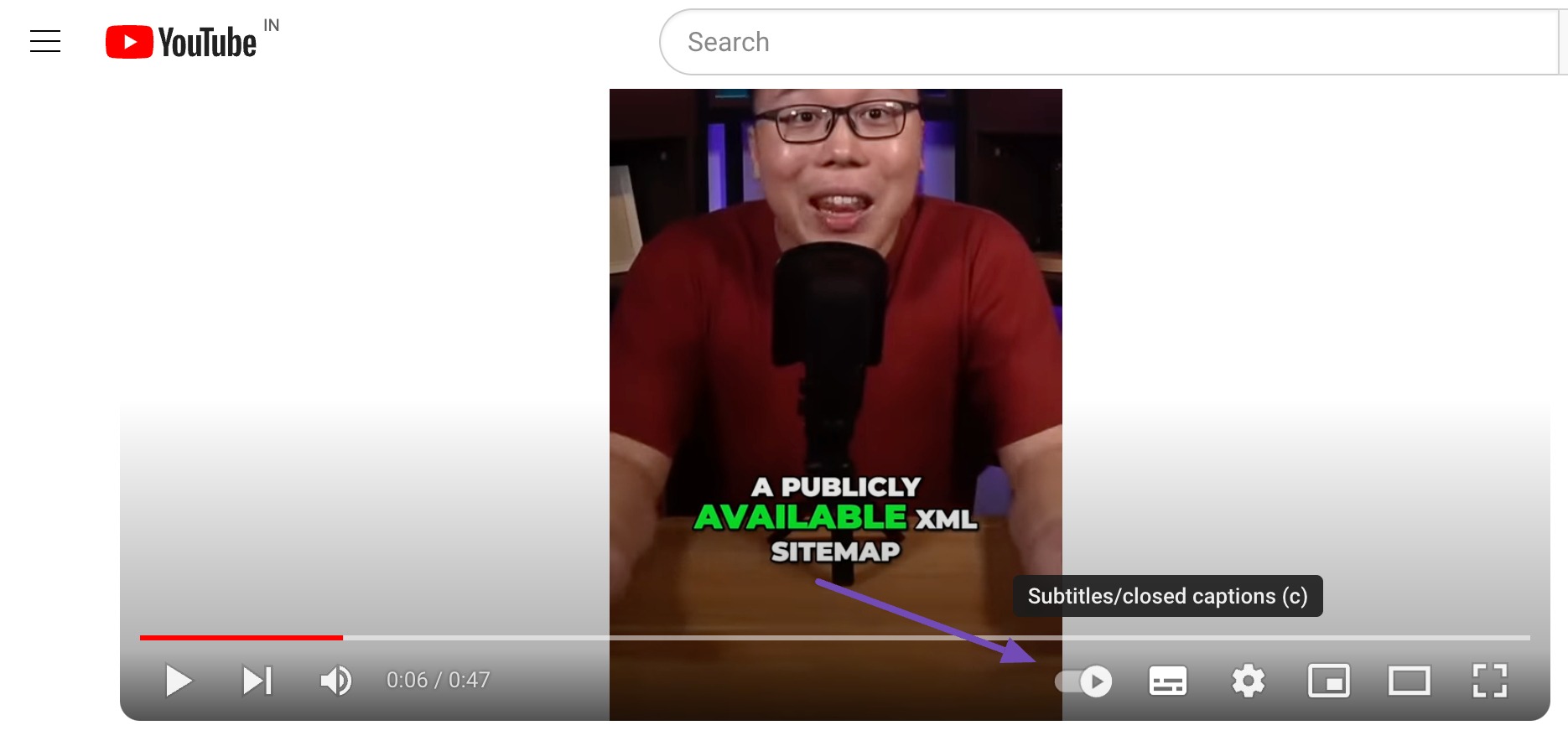
Optimize Video File Names and Tags
Don’t upload videos with generic names like video1.mp4.
Instead, use descriptive, keyword-rich filenames such as home-workout-routines.mp4.
Tags are also important, use them to categorize your video and help search engines connect your content to the right audience.
Add Time Stamps to Your Videos
Timestamps (or video chapters) break your video into clear sections, making it easier for viewers to find exactly what they need.
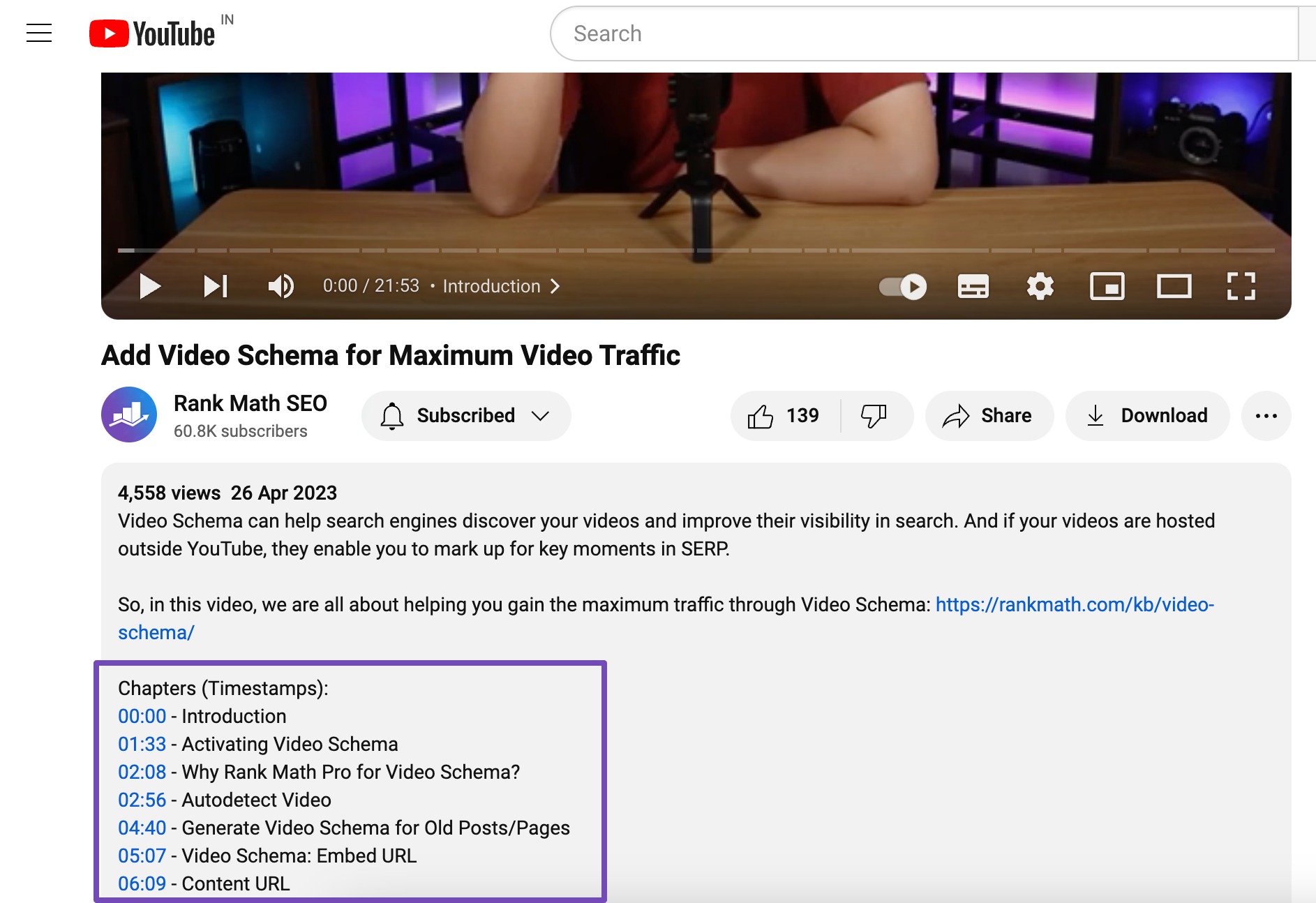
Here are some best video SEO practices for creating effective time stamps:
- Use the MM:SS format (minutes:seconds) for time codes.
- Place the label (a brief description) on the same line, separated by a colon or hyphen.
- Keep labels concise to avoid truncation by Google.
- Ensure the time stamps follow the chronological order of your video.
2.5 Embed Your Videos on Relevant Webpages
When you embed your videos on pages that match the topic they cover, you make them more valuable to both search engines and your audience.
Search engines can better understand the context of your content, which improves your chances of ranking higher, while visitors are more likely to stay engaged when the video directly relates to the page they’re viewing.

Relevant video placement also increases user interaction. By keeping visitors on your site longer and lowering bounce rates, you send strong signals to search engines that your content is useful.
Another benefit is the chance to build stronger internal links. When you embed a video on a page, you can connect it to other related articles or resources within your site, guiding visitors deeper into your content and strengthening your site’s overall SEO.
3 Frequently Asked Questions
How does video SEO differ from regular SEO?
While both aim to improve visibility in search results, video SEO focuses on video-specific elements, such as titles, descriptions, thumbnails, metadata, indexing, and engagement metrics.
How do I ensure my video is indexed by Google?
You can check indexing using Google Search Console, submit a video sitemap, and ensure your video pages have crawlable content so search engines can discover and index the videos.
Does embedding a video on my website help SEO?
Yes. Embedding videos on relevant pages can increase user engagement, improve session duration, enhance contextual relevance, and increase the chances of that page ranking higher in search.
Can video SEO help with YouTube rankings too?
Yes, optimizing elements like title, description, and on-platform metadata increases your chances of ranking higher in YouTube search results and suggested video sections.
Is it better to upload videos directly to YouTube or embed them on my site?
Both strategies have benefits. YouTube can drive platform-specific discovery, while embedding videos on your site boosts on-page engagement and helps with web search visibility. Balancing both can be powerful.
4 Final Thoughts: Boost Visibility With Smart Video Optimization
Video SEO isn’t just about getting more views, it’s about making sure your videos reach the right audience at the right moment.
By applying the best practices mentioned in this post, you can improve your visibility, grow your reach, and build long-term success in the ever-competitive world of online video.
The key is consistency: keep learning, stay updated with the latest SEO trends, and always focus on creating content that delivers real value to your viewers.
If you like this post, let us know by tweeting @rankmathseo.
